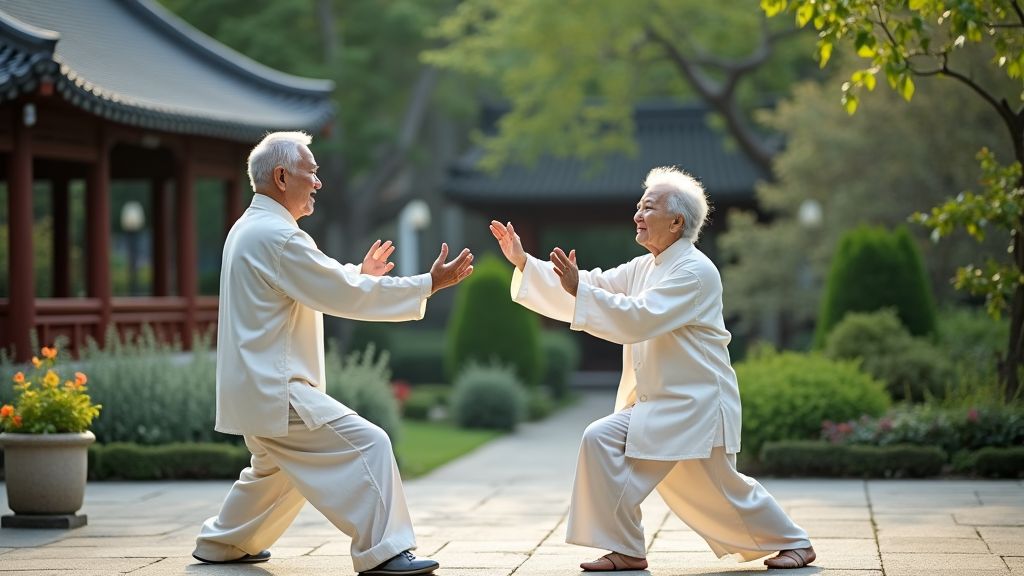In our quest for longer, healthier lives, the secrets of longevity practiced in various Asian countries present an intriguing map to future health. The confluence of traditional practices and modern wellness philosophies forms a vibrant tapestry of preventive health measures, mental well-being, and a balanced lifestyle—lessons American culture might eagerly embrace.

Balanced Diets Rich in Natural Ingredients
Throughout Asia, diet forms the cornerstone of health, with a focus on balance, portion control, and natural ingredients. In countries like Japan, meals are anchored by fresh fish, rice, and abundant vegetables, promoting low caloric intake and high nutritional value. Lydia Chang, a dietitian from Kyoto, underscores the importance of moderation and variety, suggesting that adopting similar dietary habits could mitigate chronic diseases prevalent in America.
The Power of Social Connections
In many Asian cultures, social interactions are integral to daily life and are believed to significantly impact longevity. People like Ming Zhao, a social scientist from Suzhou, highlight how tight-knit communities foster emotional support, reduce stress, and enhance life satisfaction. In contrast to the often individualistic lifestyle in the U.S., embracing communal living could be a transformative step toward holistic well-being.
Embracing the Practice of Tai Chi
Tai Chi, a time-honored martial art practiced widely across China, is known for its benefits in enhancing physical coordination, balance, and stress reduction. As noted by martial arts expert Jian Liu from Beijing, this gentle exercise promotes both physical health and mental tranquility. American society could benefit from integrating Tai Chi into community and individual fitness routines to enhance well-being and reduce healthcare costs.
Herbal Medicine and Natural Remedies
Herbal medicine is an ancient practice that remains influential in Asian healthcare systems. Countries like Korea have integrated acupuncture and herbal treatments into their mainstream medical care. Susan Park, an herbal medicine practitioner, explains how these natural remedies not only aid minor ailments but also promote overall balance within the body, offering an alternative to the conventional medications often relied upon in the U.S.
Mindfulness and Meditation Techniques
Incorporating mindfulness and meditation into daily life is a common practice in many Asian countries, aimed at cultivating mental clarity and reducing stress. Techniques drawn from Buddhist traditions, such as those practiced in Thailand, involve meditation exercises that promote inner peace and resilience. Alex Wong, a meditation teacher from Chiang Mai, suggests that these practices could greatly benefit Americans struggling with the increasing mental health challenges.
Respecting Elders and the Aging Process
Asian cultures often view aging as a natural and respected part of life. Elderly individuals hold prominent positions within families, offering wisdom and continuity. Jennifer Sun, a cultural anthropologist, notes that in countries like Vietnam, this respect forms the moral backbone of societal values, facilitating environments where seniors are cared for and valued for their contributions. Adopting similar practices in America could improve the quality of life for senior citizens.
Integrating Body and Mind with Traditional Practices
Traditional practices such as Chinese medicine and Ayurvedic principles from India emphasize the interconnectedness of body and mind for overall health. Dr. Priya Rathi, an Ayurvedic expert, explains that these practices offer customized lifestyle advice based on individual body types and psychologies. American health systems could gain much by adopting these personalized and integrative approaches to treat and prevent health issues holistically.
Community Engagement and Active Lifestyles
In regions like Bali in Indonesia, community activities often involve physical engagement, whether it's farming, festivals, or communal gatherings. Daniel Lee, a sociologist studying Southeast Asian cultures, points out that such engagement naturally incorporates physical activity and reduces sedentary behavior. Encouraging similar active living in American communities could decrease the prevalence of lifestyle-related illnesses.